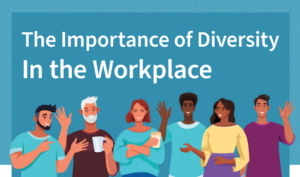
Hiring Bias – Create a Fairer Hiring Process
Bias can be a powerful factor in the recruitment process. In 2019, researchers from the University of Chicago and the University of California, Berkeley, began

Bias can be a powerful factor in the recruitment process. In 2019, researchers from the University of Chicago and the University of California, Berkeley, began

Sponsored: Orion Talent I am a staunch advocate of veteran hiring. It is a smart business decision with a positive impact on everything from profitability to

The traditional hiring process has relied on the basic model for many years. Collecting resumes, sifting through them, evaluating candidates with assessments, and then shortlisting

Millions of Americans have left the workforce due to the ongoing public health crisis of the COVID-19 pandemic. This situation has particularly impacted female employees

If the last year taught us anything, it’s that we must re-examine any foregone conclusions we have about the workforce. The global pandemic, focus on

The racial gaps that exist between White and Black Americans are astounding. From social injustices to economic disparities, Black Americans face significant challenges trying to

A couple of months ago, we hit the one-year mark since George Floyd’s death. The response and social unrest conversations reached a fever pitch last

President Joe Biden held his post for only a few hours before rescinding former President Donald Trump’s executive order banning some forms of diversity and

As we all know, the hiring process can be a stressful and uncertain time. From the candidates themselves to the HR professionals making the decisions,

COVID-19 inevitably uprooted the way our society works. Due to the pandemic, organizations have uncovered cracks in their foundations that shed light on long-standing social

A recent study revealed that roughly 40% of U.S. companies offer paid parental leave for both parents. Many publications, including the survey itself, highlighted this

Women in the workforce have always faced a lack of upward mobility, unequal pay, and suppression of our talent in the workplace. Now, let’s add

Businesses don’t tend to thrive in an echo chamber. In fact, precedent shows you need the contribution of multiple perspectives to inform processes, build a

How do you defeat unconscious bias? First, you need to know what it is. Unconscious bias (also known as implicit bias) refers to unconscious forms

Even with vaccinations in sight, COVID-19 continues to ravage world health and drag economies downward. The resulting recession – the shecession – in the United

Throughout my conversations with people in the world of work, I hear these questions every March — about the time we start celebrating Women’s history

Workplace diversity is not a new topic. And yet, the world of work hasn’t made nearly enough progress in gender, cultural, and ethnic diversity. The

We’ve recently come to understand how diversity affects us all — in society and the workplace. But there are forms of diversity we don’t talk

How will the remote work era impact your 2021 DEI efforts? How will you keep the promises made around diversity, equity, and inclusion? Before remote

Futurecasting is sometimes akin to looking into the sky and trying to connect the stars. As we look ahead to the future this time, though,
The evidence overwhelmingly supports the business case for workforce diversity. So why are companies still failing to achieve their diversity goals? Diversity has become a

In an era where more people than ever are fighting for social justice, why do job descriptions still contain hidden bias? And what is the

As the spotlight has brightened on racism. In response to recent miscarriages of justice, the emphasis on identifying racism within other aspects of life has